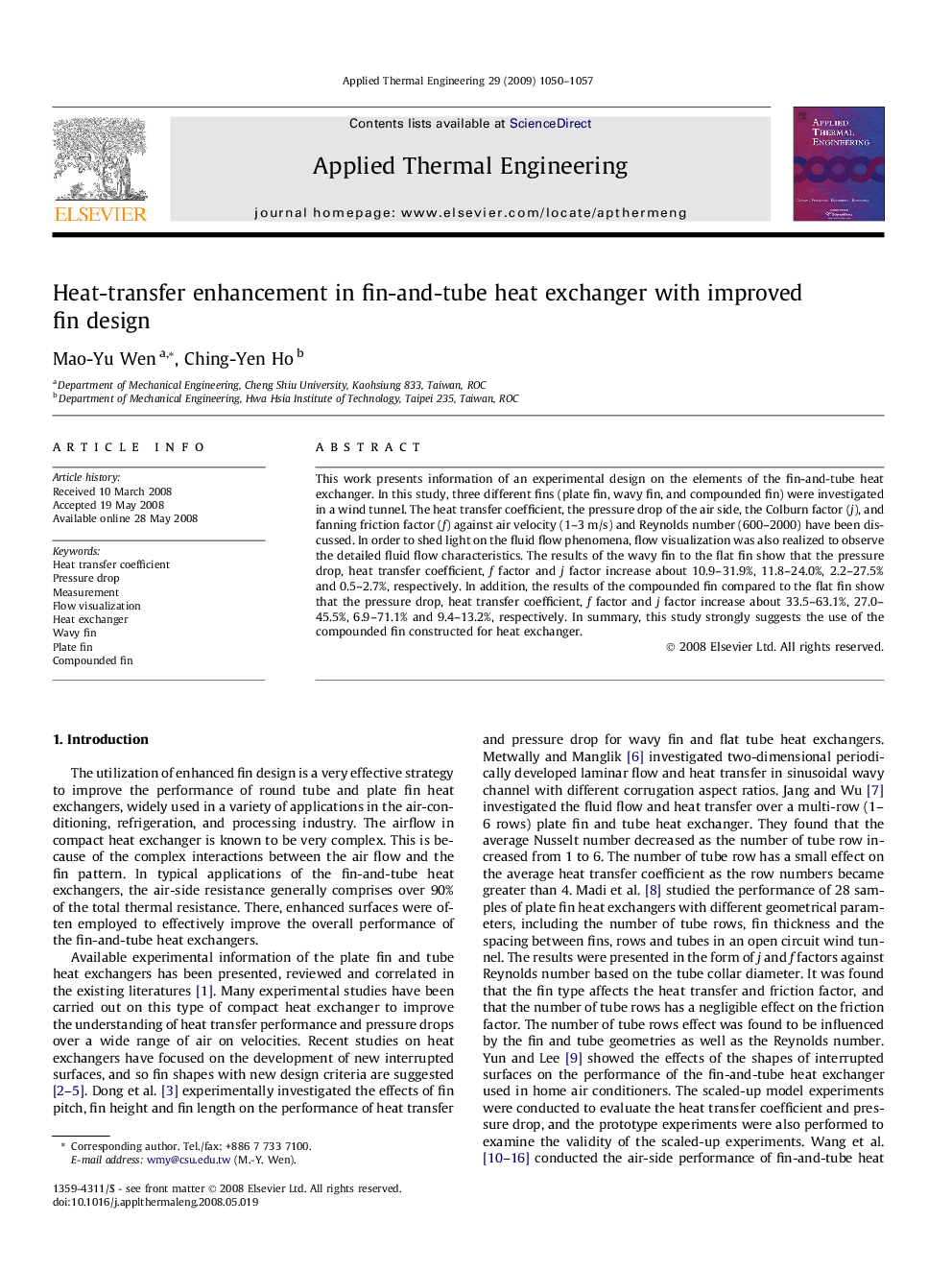| Article ID | Journal | Published Year | Pages | File Type |
|---|---|---|---|---|
| 648952 | Applied Thermal Engineering | 2009 | 8 Pages |
This work presents information of an experimental design on the elements of the fin-and-tube heat exchanger. In this study, three different fins (plate fin, wavy fin, and compounded fin) were investigated in a wind tunnel. The heat transfer coefficient, the pressure drop of the air side, the Colburn factor (j), and fanning friction factor (f) against air velocity (1–3 m/s) and Reynolds number (600–2000) have been discussed. In order to shed light on the fluid flow phenomena, flow visualization was also realized to observe the detailed fluid flow characteristics. The results of the wavy fin to the flat fin show that the pressure drop, heat transfer coefficient, f factor and j factor increase about 10.9–31.9%, 11.8–24.0%, 2.2–27.5% and 0.5–2.7%, respectively. In addition, the results of the compounded fin compared to the flat fin show that the pressure drop, heat transfer coefficient, f factor and j factor increase about 33.5–63.1%, 27.0–45.5%, 6.9–71.1% and 9.4–13.2%, respectively. In summary, this study strongly suggests the use of the compounded fin constructed for heat exchanger.
